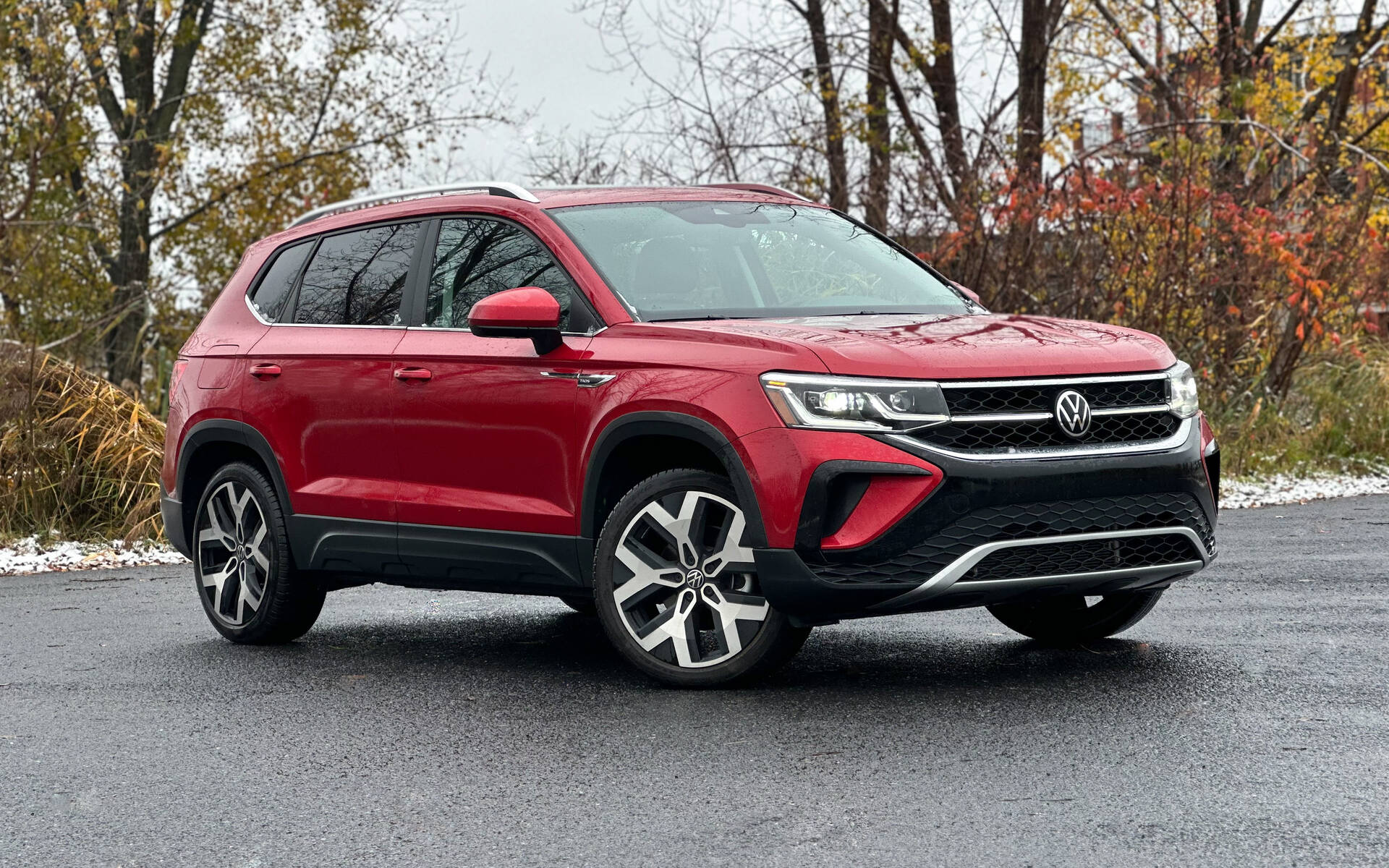2023 Volkswagen Taos Highline: Not the Same on the Highway and Around Town


As a member of the North American Car of the Year (NACTOY) jury, my job is to head over to Michigan every fall (except for the pandemic years) to put over 30 new models to the test and identify which ones are deserving of a prestigious award.
The plan is always to find a comfortable, spacious and fuel-efficient vehicle to cover—in a single day—the 1,000+ km that separate my home in Montreal from the NACTOY hub in Detroit. I know we’re a bunch of people driving this long and monotonous stretch of road through Highways 40 and 401, but every time it’s a solo road trip for me and I try my best to make the most of my time behind the wheel and really focus on the many features and details inside the car.
Read also
- Most and Least Liked Vehicles in 2023 According to Consumer Reports
- 2022 Volkswagen Taos: Baby Tiguan Makes a Good First Impression
Last year, I picked a Volkswagen Jetta Highline and later shared my experience in a lengthy review on this very website. The seventh generation of the German compact sedan happens to share its 158-horsepower, turbocharged 1.5-litre four-cylinder engine with the Taos, Volkswagen’s not-so-small subcompact crossover. The latter was my choice for this year’s trip.

Unlike the Jetta, which uses an eight-speed automatic transmission and comes with front-wheel drive exclusively, my Taos Highline tester came with a seven-speed DSG (dual-clutch) transmission and 4Motion all-wheel drive. When it comes to highway driving, the type of transmission doesn’t really change a thing.
The Laws of Physics
Introduced for 2022, the Taos is built on the same MQB A1 platform as the Jetta. It stands 4.1 cm wider and has a 5 mm longer wheelbase, but is 27.2 cm shorter and 17.5 cm taller. In terms of aerodynamics, the Taos boasts a drag coefficient of 0.33 versus 0.27 for the Jetta, which is a significant difference.
This, combined with 200 kg of extra weight, wider tires on 19-inch wheels and increased friction and inertia resulting from the AWD system, inevitably affected performance and fuel economy on my watch.

The Taos’ official NRC ratings are 9.5/7.4/8.5 L/100 km (city/highway/combined), whereas the frugal Jetta achieves 7.7/5.7/6.8 L/100 km. The sedan is quicker, too, sprinting from 0-100 km/h in 7.76 seconds and from 80-120 km/h in 5.55 seconds, while the Taos posts times of 8.04 seconds and 6.75 seconds, respectively. Of course, these acceleration numbers don’t matter as much on the highway as they do on two-lane roads.
What about cargo space? The Jetta’s trunk is limited to 399 litres, yet large enough for this writer’s full arsenal. The Taos can naturally pack more stuff. In fact, at 705 litres, its cargo area is one of the roomiest in the subcompact SUV segment. Going on camping trips would not be a problem, at least for a couple, given that volume expands to 1,705 litres once the rear seats are folded down.
Pleasant Surprises and One Disappointment
Stepping out of the Jetta and into the Taos reveals two nearly identical interiors where the dashboard and controls are concerned. Same thing for the steering wheel, shifter and pedals. The crossover stands out with a large rotary selector at the bottom of the console for alternating between the four available drive modes.

The cabin’s ergonomics are beyond reproach. Obviously, you sit a little higher in the Taos, and the steering wheel also stays high even in its lowest position. It all becomes natural after a short while, rest assured. A few hours into my road trip, I even started to feel like I was driving a car. Good visibility up front and on the sides reinforced that impression.
On the road, the Taos proves remarkably quiet and impeccably solid, which is what you want in a road-tripper. Just like most Volkswagen models, it offers precise, linear steering that doesn’t feel vague at all. Comfortably settled in the supportive driver’s seat, I arrived in Michigan without any ounce of fatigue in my body, so to speak, despite having piled up over 1,000 km of highway and stopping only twice for breaks. All this in the span of about 10 hours.
If there’s one thing that proved disappointing, it’s the infotainment display, which goes completely dark when you simply want to turn the radio off. Those German automakers have their ways of bugging drivers. Also, smart cruise control takes forever to resume the preset speed after slowing down and sometimes operates abruptly in heavy traffic. Oh, and one more couple of things: the digital key had communication problems with my tester, and the switch for the overhead lamps is not backlit so that can be a cause for distraction at night.

Overall, my Taos Highline burned 145.5 litres of gas and traveled 2,066 km, which translates into an average fuel consumption of 7 L/100 km—or four tenths better than its NRC rating. Last year, the Jetta Highline needed 5.2 L/100 km to complete almost the exact same route at the same speeds. Considering today’s gas prices, the sedan would have saved me about $60.
Ironically, after these long but enjoyable trips on the highway, Volkswagen’s small crossover proved quite irritating the rest of the time. My chief complaint is the lack of smoothness from the DSG, which is amplified by the engine’s notable turbo lag and not so progressive throttle. On top of that, the brakes may have too much bite, so the pedal requires a gentle foot.
Ultimately, you have to decide whether the Taos’ comfortable and practical interior as well as its pleasant highway dynamics outweigh its jerky and twitchy demeanor around town. And remember, there are plenty of competitive alternatives in the segment. Volkswagen should definitely ponder replacing the hyperactive DSG with the more conventional eight-speed autobox, for one thing.








